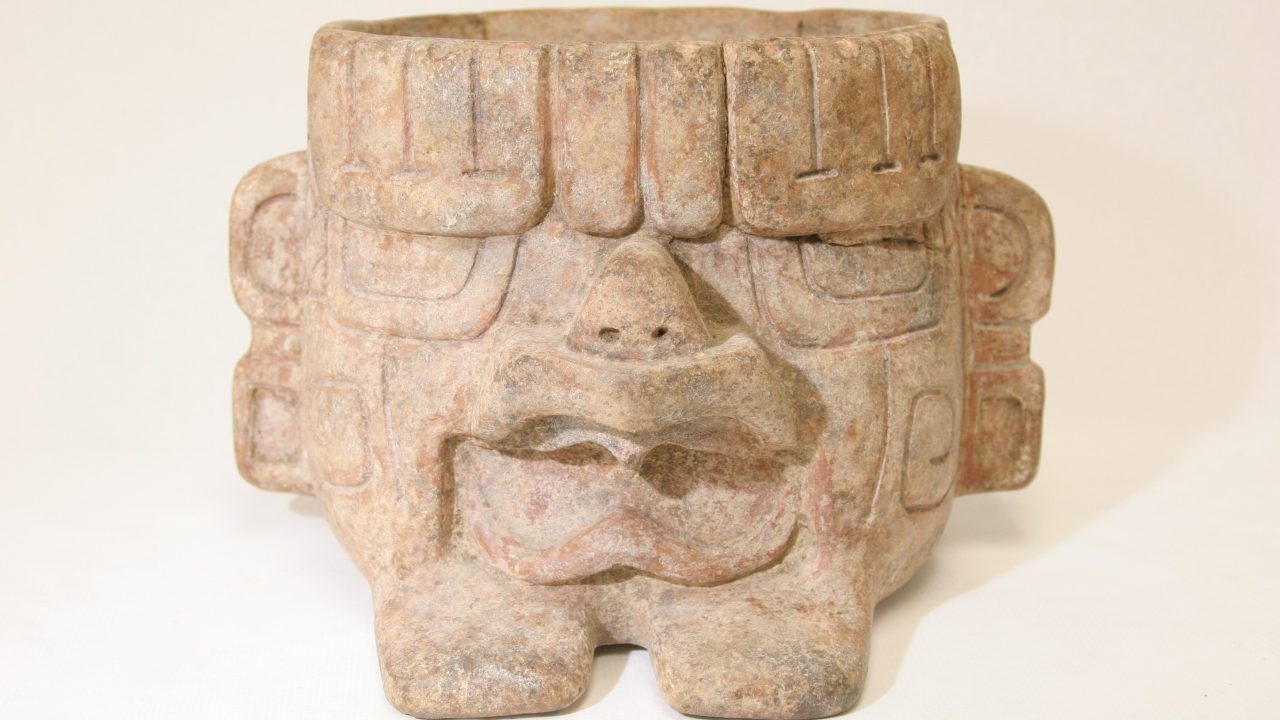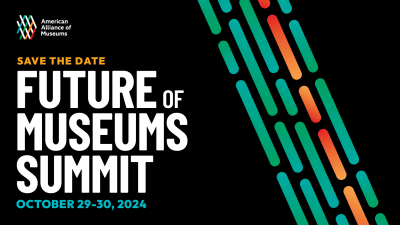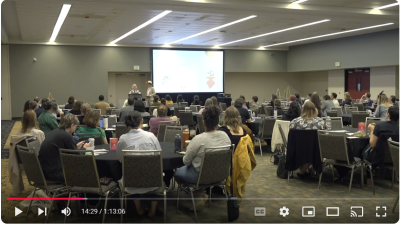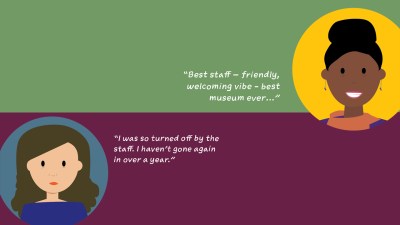
The best thinking about potential futures explores the full span of the Cone of Plausibility. By expanding our understanding of what is possible, we expand our choices regarding what is preferable. Today on the blog, Tamara Serrao-Leiva, Chief Deputy and Curator of Anthropology at San Bernardino County Museum, makes the case for challenging a false binary that constrains our thinking about repatriation. What are a museum’s choices, beyond “keep it or give it back”? Serrao-Leiva introduces a third option, “consensual curation,” as a way to foster shared spaces and collaborative stewardship.
–Elizabeth Merritt, VP Strategic Foresight and Founding Director, Center for the Future of Museums
We have all seen it: the pendulum swinging from “Repatriate everything” to “What will be left?” But is it really a binary question? Are the only answers either imprisoning objects or emptying museum shelves?
In fact, the longer I’ve been doing this important work at the San Bernardino County Museum (SBCM), the more I’ve come to see the falsity of this binary. Restitution and repatriation can and should look different across the board, and our common future must be found in the nuance of consultation and consensus. This realization led me to coin a working phrase that has come to encompass my personal and institutional goals: consensual curation. For me personally, and for the SBCM, consensual curation means that, beyond the legislative mandate of repatriation, museums can function as a safe and accessible space for national and global communities to store their items, with permissions, oftentimes framed by a “care in trust” document. While not every museum uses the same language, similar models are becoming increasingly common in the field, such as the concept of “collaborative custodians” that Jackie Swift, Repatriation Manager at the Smithsonian National Museum of the American Indian, spoke about at AAM’s Future of Museums Summit.
Repatriating the Sacred
Skip over related stories to continue reading articleSBCM’s consensual curation work began when I stepped into the curator role in 2015. As I began collaborating with our neighboring tribal governments, I kept hearing the same things: On the one hand, there was true disdain for early collecting practices, but on the other, answering inquiries from the hundreds of museums around the country with culturally affiliated items, not to mention finding physical space to receive these thousands of objects, was an unsupportable burden. This impasse was becoming a pressing issue for those of us in California especially, with the passing of CalNAGPRA.
Therefore, in 2016 I set a goal for the SBCM’s anthropology department: to have an entirely consensual collection. With that in mind, we completed NAGPRA claims, identified sacred objects, and worked closely in collections and exhibits with both tribal and international governments. In this process, we reached agreements in multiple situations where repatriation was neither required by law nor requested by tribal representatives. In some cases, tribes wanted the museum to care for their ancestors, associated objects, and unassociated objects, so we created a field in our digital and physical records specifically for consultation data that would stay connected to those items in perpetuity. At the same time, these data could remain flexible, as tribal preferences change. In other instances, a formalized “care in trust” document was appropriate to record these agreements between tribes and the museum.
If done carefully, honorably, and with consensus, museums can provide:
- A trusted partner for tribes across the nation (via a Memorandum of Understanding)
- A reliable physical space to house objects on behalf of tribes (via a Care in Trust agreement)
I knew these practices could be the solution for our local community, if we implemented them carefully and collaboratively. Our existing relationships with tribal governments have shown us what successful consensual curation can look like, especially with respect to collections spaces and shared authority. This became particularly important as many Southern California institutions (repositories, laboratories, museums) found that the materials from one site had been distributed to multiple museums, leaving each institution holding only a portion of the whole. Practically, this became a nightmare for local tribal agencies in their attempts to repatriate and rebury. In this instance, SBCM simply offered their curation facility for usage, and the tribe agreed. This, first, allowed sacred and funerary items to be held together before repatriation, and secondly, made it easier for the tribe to repatriate with one institution versus four or five. While SBCM has been a federally recognized archaeological repository for many years, it has now become a trusted repository for the tribe, and we take this honor seriously.
Increasingly, we ask ourselves, “Can this museum be the solution in the continual struggle for space on reservations?” “Can we be a repository for the tribes in the same way we are for federal agencies, and how can we use that position in making policy?” “Can we be a holding area to help our communities while they navigate unparalleled times?” “Can we be a place where communities can see themselves represented and trust their history to be held with respect and integrity?” We may not have even considered these questions fifteen years ago, but now, having worked side-by-side with these constituents for the better part of a decade—whether in consultations, events, exhibits, or collaborations—we have found ourselves filling in these roles for our governing body, our constituents, and the communities we reflect.
International Consensual Curation
In September of 2023, SBCM embarked on a large international voluntary repatriation project that serves as a perfect example of consensual curation for our region. The groundwork for the project was laid in 2018, when, on behalf of the SBCM, I approached the Government of Mexico in good faith regarding the large Mesoamerican collection housed in the museum’s anthropology department in Redlands, California. We worked with the Consulate as well as the Instituto Nacional de Antropologia e Historia (INAH) to identify 1,294 sacred objects—including pendants, musical instruments, and others—that would be returned to their homeland, while also identifying 429 objects that would stay at SBCM in order to tell the story of the large Mexican community in Southern California. This was a significant first step towards SBCM’s goal to own an entirely consensual collection.
In addition to granting us permission to retain some objects, the Government of Mexico allowed us to keep digital records (both photographs and 3D scans) of all the objects that we sent back in order to use them in research and exhibition. The items we retained gained important data and context, as INAH verified and vetted each item. This information has been added to each returned object’s recorded consultation notes, which allows us to track the “consents” (or permissions) on our digital database and make clear what consultations have occurred. In making this agreement, however, we understand that while these objects may have been allowed to stay today, this may not always be the case. We will leave the door open for future collaborations and conversations.
In the end, two governments came together to find a solution that worked, demonstrating in the process that when we talk about voluntary repatriation, restitution, and reparations, there are no limits to the possibilities. Return isn’t always the outcome.
Future Forward
As I dream of what museums look like in the future, I hope to see ancestors resting with their families and cultural items rejoined with their ancestral territories. I hope to see shared spaces and collaborative stewardship of items that remain in museum spaces. And finally, I hope to see institutions that only hold items they have permission and consent to hold.








I appreciate the thought-provoking insights you have provided.
I wanted to take a moment to address the use of the term “consensual curation” in relation to these collections. While I understand the intention behind emphasizing collaboration and respect, it is important to consider the problematic connotations associated with the term “consensual.”
Using “consensual” in this context inadvertently brings to mind the concept of sexual consent, which is not appropriate when discussing the repatriation of cultural artifacts that were often taken without permission or through acts of colonization. It is crucial to recognize that these collections cannot be given “consent” after the fact, as they were acquired through historical injustices.
Instead, I would like to suggest we use the term “collaborative custodians,” which as you state was coined by Jackie Swift, who is also native. This term better reflects the importance of museums working with indigenous communities as equal partners, recognizing their agency and sovereignty in reclaiming their cultural heritage. It underscores the necessity of museums acting as caretakers in collaboration with the native communities.
By adopting the term “collaborative custodians,” museums can demonstrate their commitment to respectful collaboration and acknowledge the historical injustices that have taken place. This approach encourages mutual understanding, shared decision-making, and the recognition of indigenous rights and perspectives.
I believe that by using appropriate and inclusive language, we can contribute to a more informed and respectful dialogue surrounding the repatriation of indigenous cultural artifacts. It is vital that we promote a greater understanding of the complex histories and ongoing struggles faced by indigenous communities